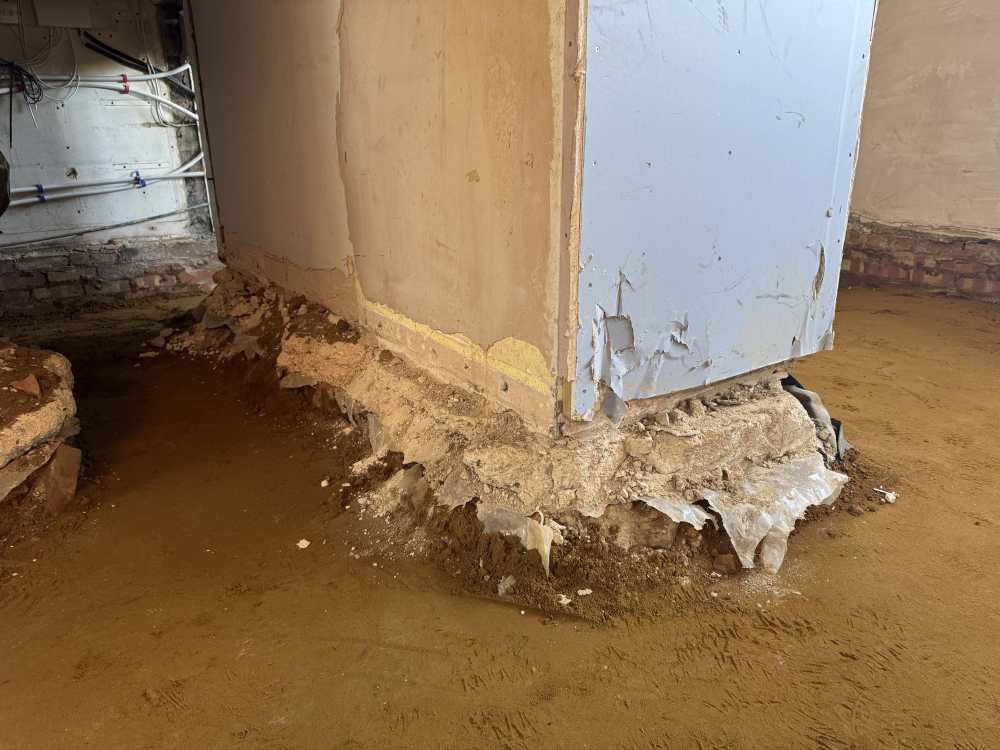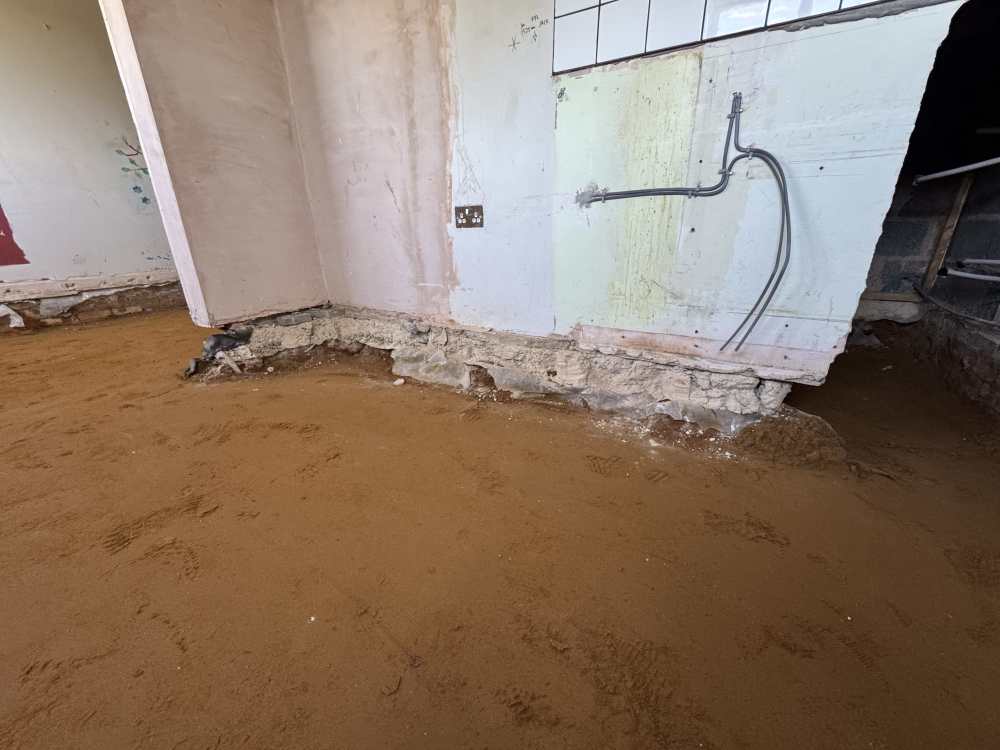
vala
Members-
Posts
238 -
Joined
-
Last visited
Recent Profile Visitors
The recent visitors block is disabled and is not being shown to other users.
vala's Achievements

Regular Member (4/5)
25
Reputation
-
If you need a guide for purging air out of the loops, we have done it using the method describe in this manual from Wunda. Noticed a fair bit of air coming out even from loops we thought had been fully purged. May be worth a try. https://www.wundagroup.com/wp-content/uploads/2019/10/M07-generic-Wunda-premium-Manifold-25-4-2018.pdf
-
@JohnMo thanks for the advice. i will do as you say and leave it to get up to temp. with regards to the above do you mean to trim the flow rate up or down slightly? i don't have individual thermostats in the rooms as it's all open loop. and decreasing the flow temp (at the manifold) would affect all loops.
-
Little update from the weekend. so I've used the information from this video to determine and set the flow rates however one thing I've noticed is it doesn't take into account the floor covering. does anyone know how I can add the TOG or thermal conductivity value to get a more accurate flow rate?
-
@JohnMo From the combi the flow and return go to a buffer vessel. This has a temp probe about 1/4 and 3/4 up, measuring a min and max temp. When there is a call for heat (24/7) at present, the UFH pumps activate and the flow and return goes to and from this. When the temp in the buffer reaches a min set point and there's a call for heat the boiler fires up to get the buffer up to the max temp it's been set at. Looking at your screen grab, I do notice that when the boiler fires up, the flow temp at the manifolds increase but the return doesn't go up as much creating around 5° dT. However this always overshoots the temp set on the mixing valve. Once the buffer is satisfied and the boiler is off, the flow temp comes back down to the figure it's set at.
-
The flow temp started around 15-16° on a couple of weeks ago. After 3 days or so at that, it's been increased by a degree a day. Today it's up to 26°. Yes, for example yesterday the manifolds said 25° flow temp and 25° return temp.
-
I have a mixer and pump as supplied by Wunda at present on both floors. Initially when the first floor was installed all loops were set as per the guidelines by Wunda, so loop length divided by 40. All that I got was the same flow and return temp on the manifold and cold rooms. Hence when I started looking into flow rates more I became aware of a different method using mass flow rate to determine the L/min required.
-
We've now had our polished concrete floor installed and the required time has passed so we can now slowly introduce heat into it. Thought I'd use this time to try and get the upstairs UFH working better, and try and mimic the way we hope to run an ASHP - all open loop, at one temp. Granted with the heat pump and WC the flow temp will vary but I haven't got that option with my oil combi. What info do I need to have in order to balance the manifold and set the flow rates? Wunda say just divide the loop length by 40 to get the flow rate. Tried this when the first floor UFH was installed and didn't really get anywhere. I've come across another method which is to do with mass flow rate. Has anyone here used this method and if so what info did you require from your own system to starting calculating the flow rate required. FWIW - ground floor is 125mm concrete on top of 200mm PIR with 100mm pipe spacings. First floor is predominately carpet (1.9TOG for carpet and underlay combined) on top of 25/30mm pug mix on 100mm PIR with 135mm spacings. Current flow temp is 25º and this is ok to increase at 1º a day as advised by the concrete installers.
-
Perfect. Thanks for the confirmation @Nickfromwales and yes already installed an inspection chamber over the 90° bend.
-
Had an extension at front of the house for a utility/wc and a new soil pipe was installed which connects into the existing. The run consists of a 1m straight, 90° bend, followed by a 8-9m straight before connecting into the existing drain. This has been installed for a toilet, basin, washing machine/tumble dryer. Does this need to be vented separately to the original/main stack?
-
That idea has been floated but the disruption to the f/f has muted it. but 100% would have been the simplest solution.
-
Hi Nick, which section to you mean? that particular L shape wall has the kitchen on one side, and top half of the staircase after the 1/2 landing. i've cleared the hardcore and dug done to hit clay. Can tamp that firm and place scaffold board under the prop.
-
So SE came round today and due to the state of the concrete slab under the wall it needs to be supported, remove concrete and whatever is under, and dig a footing. due to access on one side I'm hoping to use strongboys at around 800mm spacings off size 0 acrows. I asked a builder mate of mine who said strongboys can move a bit if not a solid wall above. but all the literature for strongboys says there fine for single storey walls. anyone here had any experience of using them with single storey walls?
-
It's a single storey block wall and the long part I believe has been created for the staircase stringers to fix into. The short section has a small RSJ coming off it to the external wall. Looks like this is to provide support for the timber joists. Above both sections, is a simple stud wall diving the bathroom/landing and bathroom/bedroom. Got 200mm PIR going on top of the sand.
-
In the build up to having a new structural slab installed the existing slab has had to be broken up. The groundsworkers have gone to town with the use of their breaker and created a bit of a mess here on a single storey block wall. Had my builder round today who wasn't impressed at all, but whilst I wait for the structural engineer to visit (hopefully tomorrow) I was looking for advice if anyone has in order to rectify. 1 suggestion me and the builder made today was put needles through at intervals, and prop using mini acrows. Most likely need to create a solid foundation for the acrows. Then remove all the earth and old slab, before digging a new footing underneath and building up with bricks/blocks for this wall to sit on. Any other suggestions welcome whilst I sit and worry a bit about this stage!
-
Thanks for all the comments. where the pipes will be coming out of the concrete and into the manifold is there a need to put some insulation/conduit over these areas or fine to leave bare? seen images of some with or without but cannot see why you would/wouldnt.



